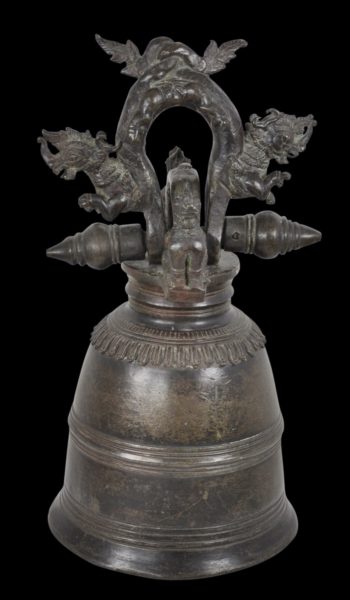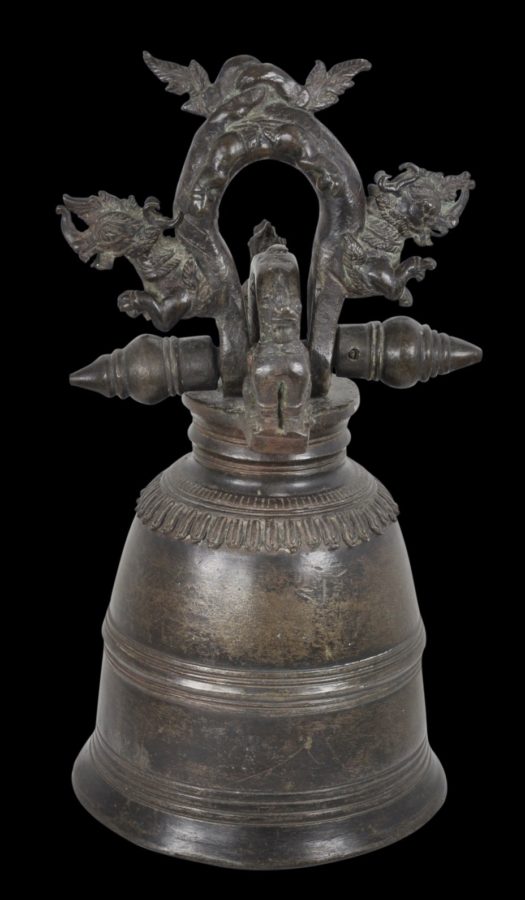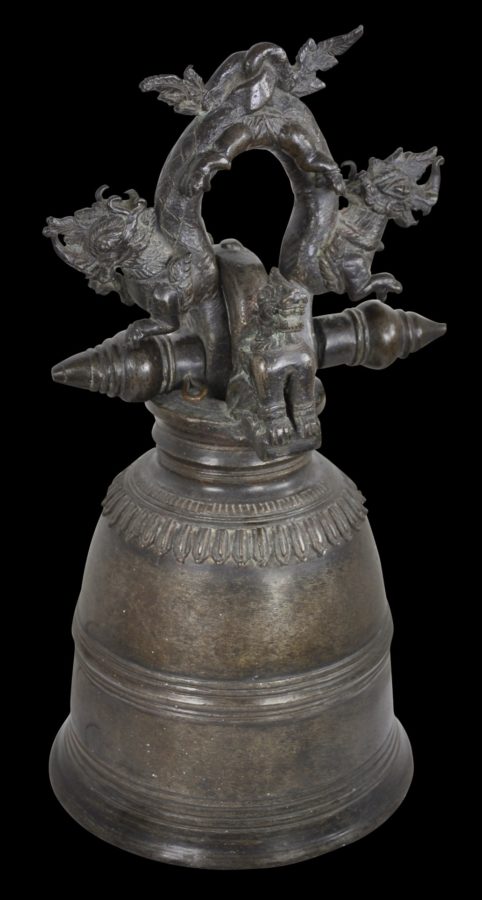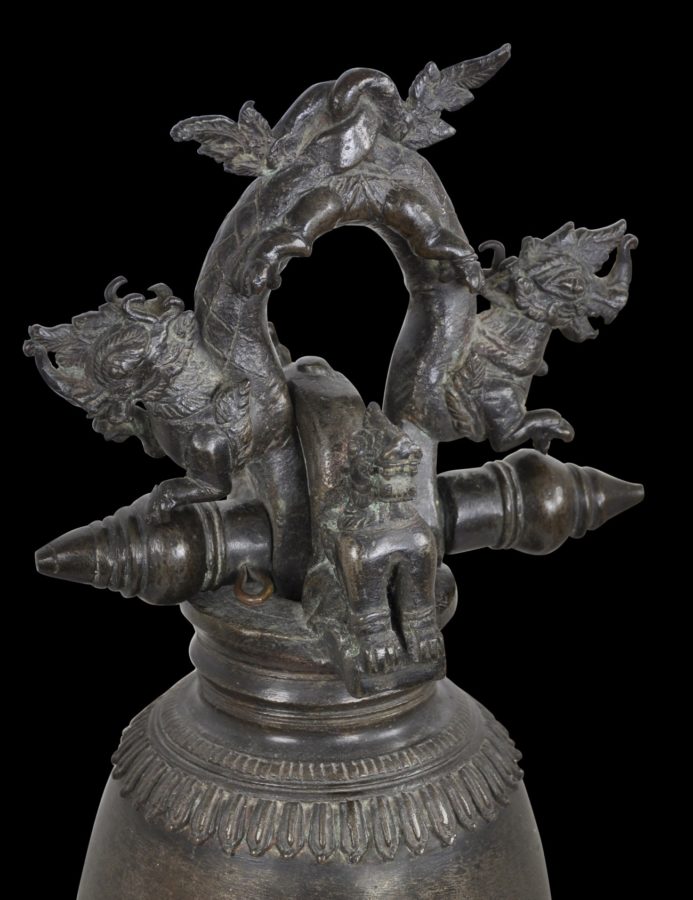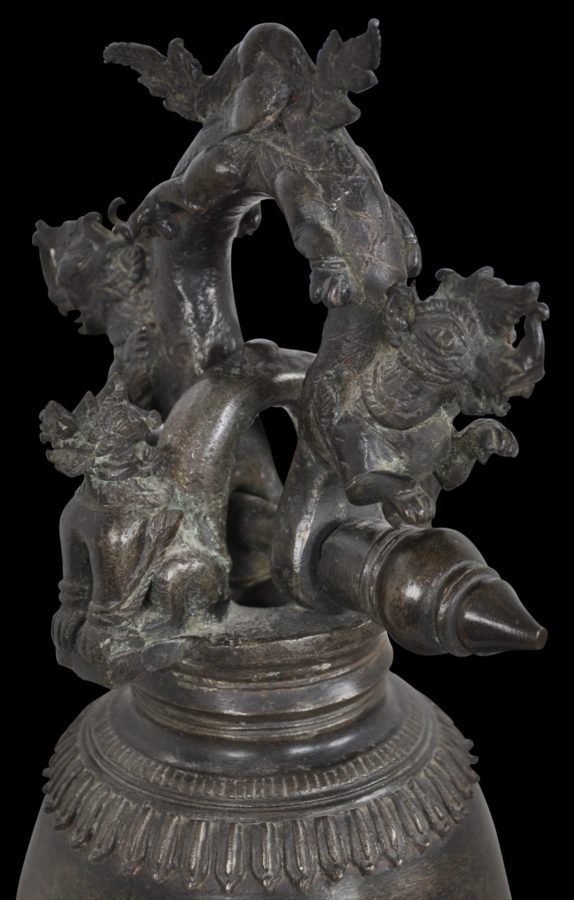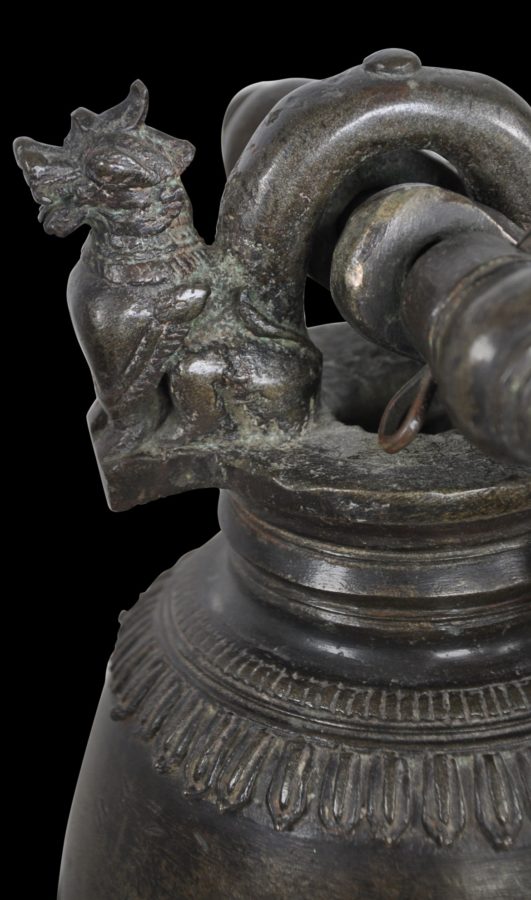Enquiry about object: 5739
Burmese Finely-Cast Bronze Temple Bell & Bracket
Burma circa 1850
height: 38cm, diameter at base: 19cm
Provenance
UK art market
This cast bronze bell has a splendid sculptural presence and patina.
The offering of a bronze bell to a monastery or temple was considered second only to the offering of a Buddha image as an act of merit (kutho), according to Bennett (2011, p. 200).
Such bells were cast using the lost wax (cire perdue) method. Casting of such bells was auspicious with specific rituals being performed by the caster and sponsors to ensure the appropriate blessings. Some bells, according to Fraser-Lu (1994, p. 132), weigh up to 90 tons. The example here weighs under ten kilograms. Typically, such bells were cast from an alloy of mostly copper with some tin and occasionally a small quantity of lead.
The bell here, as with all such Burmese bells, does not have a clapper. It was designed to be struck from the outside by a wooden striker. When such bells were struck in a temple (itself a meritorious act), onlookers traditionally would responds with cries of ‘thadu, thadu!’ (‘well done, well done!)
It is of classic bell shape with several rows of engraved concentric circles and two upper rows of lappet-like lotus petals. The upper section of the bell has been cast with a pair of chin-thei (Burmese lions) which guard the holding ring.
The hanging bracket is attached to the bell by means of an iron rod which passes through the holding ring. This has lotus bud finials at either end, one of which is removable to allow the rod and bracket to be removed from the bell.
The iron hanging bracket has been cast separately to the bell. Typically, a donor would select a bell and then select a hanging bracket with the bracket having some sort of personal significance to the donor such as being cast with figures relevant to the day of the week on which the donor was born. It has been elaborately cast with two outward looking serpents or nagas to either side whose tails interlock over the bell and the entire structure. The naga is one of the animal representatives of the gyo-shit-lon or the ‘Eight Planets’ which correspond to the days of the week. The naga represents the planet Saturn and this corresponds to Saturday, suggesting that the donor of this bell was born on that day.
The bell is in excellent condition. It has a deep, dark patina. There are no losses and no repairs.
It is likely that the bell has been in the UK since colonial times.
Below: A similar, though larger, bell in use at Rangoon’s Shwedagon Pagoda, late 19th century.
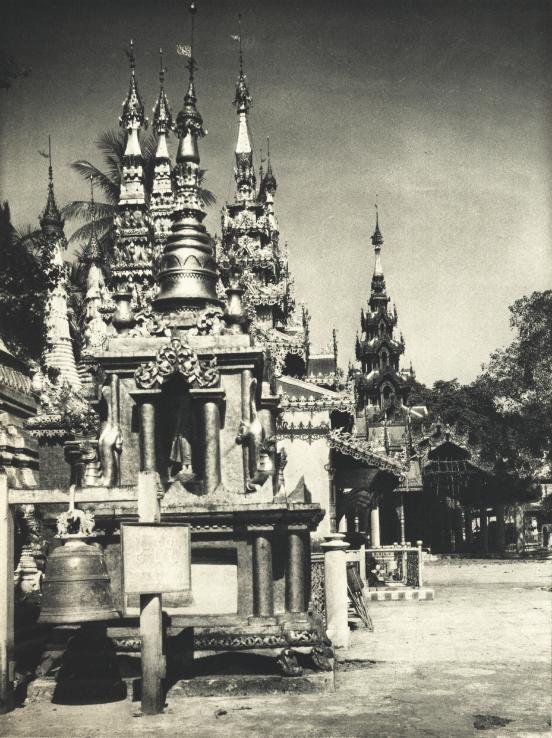
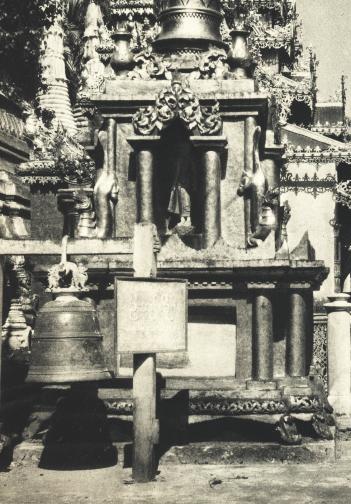
References
Bennett J., Beneath the Winds: Masterpieces of Southeast Asian Art in the Art Gallery of South Australia, Art Gallery of South Australia, 2011.
Conway, S., The Shan: Culture, Arts & Crafts, River Books, 2006.
Fraser-Lu, S., Burmese Crafts: Past and Present, Oxford University Press, 1994.
Fraser-Lu, S., & D.M. Stadtner, Buddhist Art of Myanmar, Asia Society Museum, 2015.
McGill, F. (ed.), Emerald Cities: Arts of Siam and Burma, 1775-1950, Asian Art Museum, 2009.
Murphy, S. (ed.), Cities and Kings: Ancient Treasures from Myanmar, Asian Civilisations Museum, 2016.
Stadtner, D., Sacred Sites of Burma: Myth and Folklore in an Evolving Spiritual Realm, River Books, 2011.


